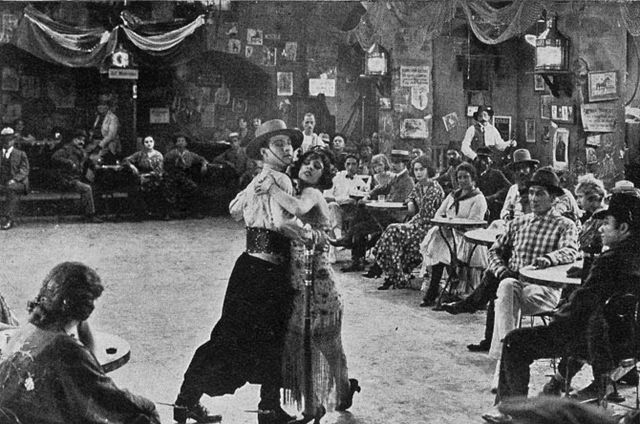
Was the transition from silent movies to talkies difficult? Yes, the transition from silent movies to talkies was difficult, not just technologically, but also for the actors.
Movies began to appear alongside the invention of photography. Early photographs took hours to take, but once it became possible to take photographs instantly, movies were the next logical step. After all, a movie is only a lot of photographs taken very quickly one after the other. Movies rapidly became popular, and movie theaters sprang up in most towns. Movies were short and movie companies tried to make as many movies as they could. People would pay to go to the movie theater and watch more than one movie. A lot of these silent film stars became household names. Some of them most people would still know, but not a lot. A lot of silent films haven’t stood the test of time either, primarily because they were filmed on celluloid, which is highly flammable. Incidentally, silent movies were not called “silent movies” until talking pictures took off because they were just movies. Giving a name to something after the fact is called a retronym.
By the 1920s, movies with sound had become technically possible. Ernst Ruhmer had come up with a way to record sound the sound onto a film by translating the sound into light. The first real talking movies were released in 1927 and the last silent movie was “The Poor Millionaire” released in 1930, but once talkies had appeared, there was no real hope for silent movies. Charlie Chaplain made two silent movies in the 1930s, but they were only released because of his star power. The studios had stopped making them. So, was the transition from silent movies to talkies difficult?
There were several difficulties that arose. The first were technical. Recording sound onto the film was not easy because the quality of mics and sound recording devices was low. Mics had to be set in specific places and the actors needed to stand very still underneath them and direct their voices at the mic or the mic wouldn’t pick. It couldn’t record sounds that were too loud, too quiet, too high, or too low. They had a lot of trouble recording women’s voices. The mic would also pick up all of the other noise in the studio, so everything needed to be kept soundproof. Cameras at the time worked by rotating the film through the camera as each frame was shot, which was a very noisy process. The cameras needed to be sealed up in soundproof booths as well. Managing to pick up all of the sound was a very taxing job.
Replaying the sound in the movie theater was not easy as well. As all movies were silent at the time, no movie theater was wired for sound. They slowly transitioned, but it was not an easy process. In the beginning, it was difficult to amplify the sound, making it hard to hear. Even when movie theaters were wired for sound, the sound and the picture weren’t always in sync.
The technical problems were overcome fairly quickly, as is the way with most new technology. The effects for the actors were longer lasting and sometimes career ending. The first problem was the style of acting. Silent movie stars had to express everything with their body language and their facial expression. They had exaggerated movements and the scenes were shot in a way that made them as easy to understand as possible. When sound came along, these actors had to recite their lines, but they were too used to over exaggerating. Talkies required a different type of acting skill. A lot of the new actors that became big in the talkies had come up from theater or musicals, where they were used to talking as a part of acting. A second problem was that some silent movie actors didn’t have voices that matched the characters that had become famous for portraying. Their voice, or what they were saying, could ruin the image and then the studios didn’t want to use them. A heavy foreign accent was no problem in a silent movie but many actors lost their jobs because of it when talkies came about. The directors and the screenwriters also had to adapt. This who new way of acting required new scripts and new methods of directing, but that didn’t come easily. Scripts were unnatural, poorly paced, and far too stilted. It took a while for the directors to get the hang of the new style. However, just as with the technology, there were a lot of problems, but it didn’t take too many years to overcome them. By the early 1930s, the quality of talkies was rising and a whole new raft of stars became famous. Some silent stars that did manage to make the transition that we will have heard of were Greta Garbo, Joan Crawford, and Lauren and Hardy. And this is what I learned today.
Enjoyed this? Try these:
Sources
https://collider.com/babylon-true-story
https://www.centralcasting.com/how-talkies-changed-the-film-industry
https://www.backstage.com/magazine/article/silent-film-actors-transitioned-talkies-6882
https://en.wikipedia.org/wiki/Silent_film
Image By Metro Pictures Corporation (still) – File:Sheet_music_cover_-_JULIO_-_OF_THE_ARGENTINA_(1921).jpg, Public Domain, https://commons.wikimedia.org/w/index.php?curid=45462406
